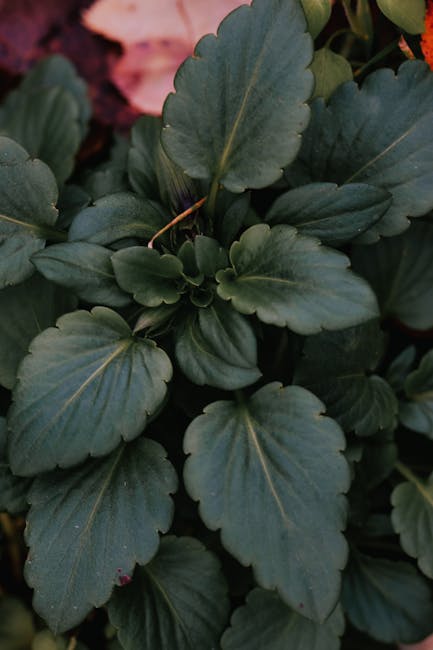Community garden plots offer a multitude of benefits that extend beyond the simple act of gardening. When you participate in a community garden, you engage in a shared experience that fosters a sense of belonging and connection with your neighbors. These gardens serve as communal spaces where individuals from diverse backgrounds come together, cultivating not only plants but also friendships and a sense of community.
You may find that the act of working side by side with others creates bonds that transcend age, culture, and social status, enriching your life in ways you might not have anticipated. Moreover, community gardens provide an opportunity for you to learn about sustainable practices and the importance of local food systems. By growing your own fruits and vegetables, you gain firsthand knowledge about where your food comes from and how it is cultivated.
This experience can lead to healthier eating habits, as you are more likely to consume fresh produce that you have nurtured yourself. Additionally, community gardens often promote biodiversity by encouraging the growth of various plant species, which can enhance local ecosystems and contribute to environmental sustainability.
Key Takeaways
- Community garden plots provide access to fresh, organic produce and promote physical activity and mental well-being.
- Use online resources such as community garden directories, social media groups, and local government websites to find community garden plots near you.
- Getting involved in community garden plots can be as simple as volunteering your time, sharing your gardening expertise, or participating in community events and workshops.
- When starting your own community garden plot, consider factors such as location, soil quality, and access to water, and involve the local community in the planning process.
- Community garden plots provide opportunities to connect with like-minded individuals, share knowledge, and build a sense of community while promoting sustainable gardening practices.
How to Find Community Garden Plots Near You
Finding community garden plots in your area can be an exciting adventure. Start by conducting a simple online search for community gardens in your city or town. Many local governments and non-profit organizations maintain lists of available gardens, complete with contact information and details about how to get involved.
You might also consider visiting websites dedicated to urban gardening or local agricultural initiatives, as they often provide resources and links to community gardens nearby. Another effective way to discover community garden plots is by reaching out to local gardening clubs or horticultural societies. These organizations often have valuable insights into where you can find community gardens and may even host events or workshops that can help you connect with fellow gardening enthusiasts.
Don’t hesitate to ask around in your neighborhood; word of mouth can be a powerful tool in uncovering hidden gems in your community. You may be surprised at how many people are already involved in gardening initiatives and are eager to share their experiences with you.
Getting Involved in Community Garden Plots
Once you’ve identified a community garden plot that piques your interest, the next step is to get involved. Most community gardens welcome new members with open arms, but it’s essential to understand the specific requirements and guidelines of each garden. You may need to fill out an application or attend an orientation session to learn about the garden’s rules, responsibilities, and the types of crops that are best suited for the space.
This initial engagement will help you feel more connected to the garden and its members. As you become more involved, consider volunteering for various tasks within the garden. This could include planting, weeding, watering, or even organizing events for the community.
By actively participating, you not only contribute to the garden’s success but also deepen your relationships with fellow gardeners. Sharing knowledge and experiences can lead to a richer understanding of gardening techniques and foster a supportive environment where everyone can thrive.
Tips for Starting Your Own Community Garden Plot
If you’re inspired to start your own community garden plot, there are several key steps to consider. First, identify a suitable location that has access to sunlight, water, and good soil. You might want to collaborate with local organizations or schools that have available land but lack the resources to cultivate it.
Securing permission from landowners is crucial before proceeding with any plans. Once you’ve established a location, gather a group of interested individuals who share your passion for gardening. This collective effort will not only make the workload lighter but also create a sense of ownership among participants.
Together, you can brainstorm ideas for what to grow and how to manage the garden effectively. Establishing clear roles and responsibilities will help ensure that everyone is on the same page and committed to the garden’s success.
Connecting with Others in Community Garden Plots
One of the most rewarding aspects of participating in community garden plots is the opportunity to connect with others who share your interests. As you work alongside fellow gardeners, take the time to engage in conversations about gardening techniques, favorite plants, and personal experiences. These interactions can lead to lasting friendships and a supportive network that extends beyond the garden itself.
Consider organizing social events within the garden, such as potlucks or workshops, where everyone can come together to share their knowledge and celebrate their hard work. These gatherings not only strengthen community ties but also create an inviting atmosphere for newcomers who may be hesitant to join. By fostering an inclusive environment, you encourage more people to participate in gardening activities and contribute to the overall success of the community garden.
Sustainable Practices in Community Garden Plots
Sustainability is at the heart of many community garden initiatives, and as a participant, you have the opportunity to adopt eco-friendly practices that benefit both the environment and your local community. Start by implementing organic gardening techniques that avoid synthetic pesticides and fertilizers. Instead, focus on natural alternatives such as composting kitchen scraps or using companion planting methods to deter pests.
Water conservation is another critical aspect of sustainable gardening. Consider installing rain barrels to collect rainwater for irrigation or using drip irrigation systems that minimize water waste. By adopting these practices, you not only contribute to a healthier ecosystem but also set an example for others in your community who may be looking for ways to make their gardening efforts more sustainable.
Growing Your Own Food in Community Garden Plots
Growing your own food in community garden plots can be an incredibly fulfilling experience. As you nurture plants from seeds or seedlings into mature crops, you’ll develop a deeper appreciation for the food you consume. The process of watching your plants grow and eventually harvesting them provides a sense of accomplishment that is hard to replicate elsewhere.
In addition to personal satisfaction, growing your own food allows you to enjoy fresh produce that is often more flavorful and nutritious than store-bought options. You may find joy in experimenting with different varieties of fruits and vegetables that are not typically available at grocery stores. Sharing your harvest with friends and family can also create a sense of pride as you introduce them to the fruits of your labor.
Supporting Local Communities through Community Garden Plots
Community garden plots play a vital role in supporting local communities by promoting food security and fostering social connections. By growing food locally, you help reduce reliance on industrial agriculture and long-distance transportation, which can have detrimental effects on the environment. This localized approach not only benefits your immediate surroundings but also contributes to a more resilient food system overall.
Furthermore, community gardens often serve as educational hubs where individuals can learn about nutrition, cooking, and sustainable practices. By hosting workshops or events focused on these topics, you can empower others in your community to make healthier choices and develop their gardening skills. In this way, community gardens become more than just places for growing food; they transform into vital resources that uplift entire neighborhoods and create lasting change.
In conclusion, community garden plots offer numerous benefits that extend far beyond gardening itself. From fostering connections among neighbors to promoting sustainable practices and supporting local communities, these gardens serve as vital spaces for growth—both literally and figuratively. Whether you’re looking to get involved in an existing garden or start one of your own, the journey promises to be rewarding on many levels.
Embrace the opportunity to cultivate not just plants but also relationships and knowledge that will enrich your life and those around you.
If you’re looking to start your own community garden plot near me, you may want to check out this article on essential gardening tools to make your garden grow. This blooming bliss. For those interested in creating a bountiful and harmonious organic garden, be sure to read this article on the bountiful harmony that flawlessly defines the essence of organic gardening.




